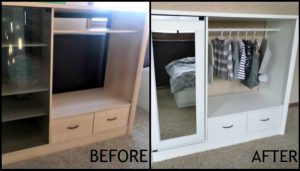Last Updated on February 7, 2024 by teamobn
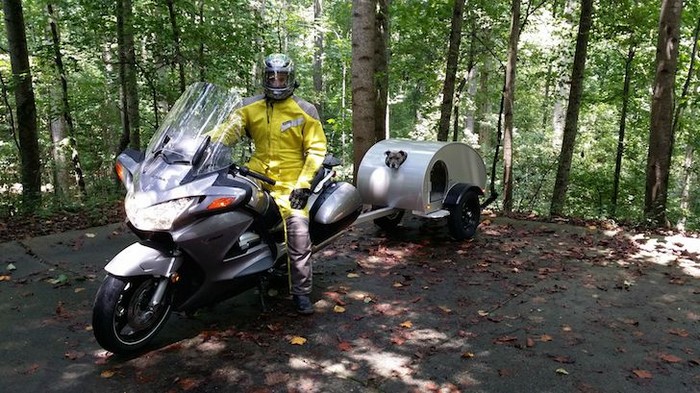
If you love spending time outdoors with your friends, you may be wondering if it’s possible to take your pet dog with you on your next adventure.
The good news is, with a little bit of creativity and elbow grease, you can easily build a dog trailer that attaches to your motorcycle.
This dog trailer project is perfect for those who love to travel by motorcycle with their dogs. It’s easy to follow and relatively satisfying to build, and it will provide your furry friend with a comfortable space to ride along with you. So, if you’re ready to hit the open road with your furry companion, read on for everything you need to know about building a dog trailer for your motorcycle.
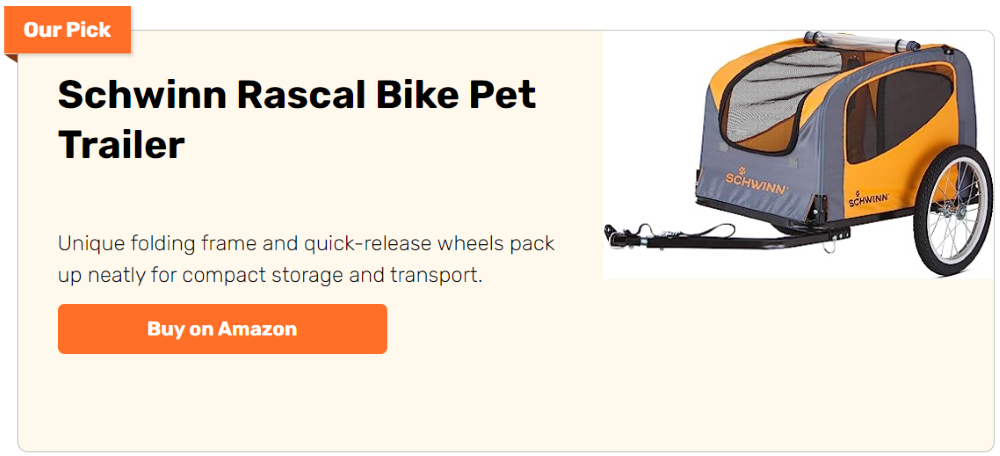
When you’re looking for a great way to bring your furry friend along for some outdoor fun – or even to the vet – then this DIY teardrop dog trailer is definitely worth considering! It’s well-built and comfortable for your dog, and also safe and easy to tow. Plus, it’s a great project for anyone who enjoys DIY and spending time outdoors with their dog!
The owner’s motorcycle is equipped with a temperature gauge that shows both the interior and the outside temperature. This is a useful feature, as it allows the rider to monitor both the temperature inside the cabin and the temperature of the engine.
He also installed a camera at the back of his motorcycle so that he can check on his pet every now and then. This way, he can make sure that his pet is safe and sound while he is riding his motorcycle. This has been a great way for him to keep an eye on his pet, and he has even been able to capture some great moments of his pet enjoying the ride.
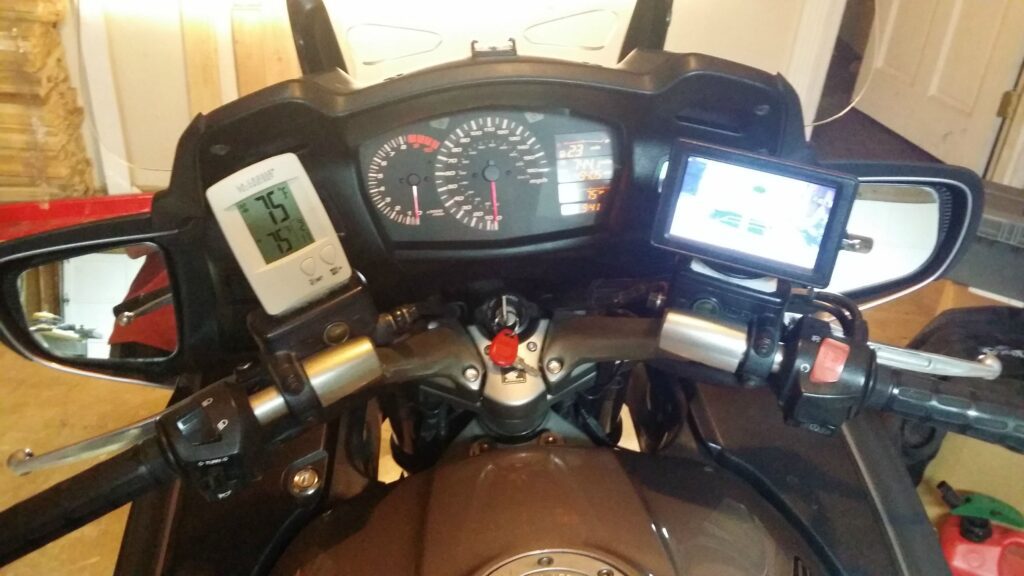
If you’re handy with a CNC router machine, then this DIY dog trailer project is definitely worth undertaking for your beloved furry friend. While it requires some hard work, the end result will be a custom-made trailer that your dog can enjoy for years to come.
We’ve gathered some of the cutest mini dog camper houses in our album below! If you’re looking for a fun and unique way to spoil your pet, then one of these houses might be the perfect solution. These houses provide a cozy and comfortable space for your pet to relax, while also giving them a fun place to play. Take a look through our selection and see if one of these houses is the right fit for your furry friend.
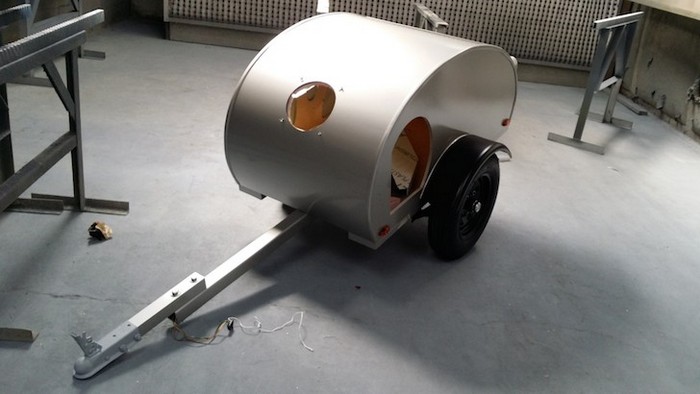
Contents
Building a Dog Trailer
Materials
- 1/2″ Birch Wood
- 3/4″ Plywood
- 3/8″ Plywood
- 2×6 Timber
- Wood Glue
- Wood Screws
- Axle and Wheels
- Nuts and Bolts
- Brakes
- Signal Lights
- LEXAN Rain Cover
- Spray Foam
- 2″ Foam
- Vinyl Cover
- Paint
- Automotive Carpet
- Spray Adhesive
Tools
- Measuring Tape
- CNC Router
- Staple Gun
- Cordless Drill
- Jigsaw
Instructions
- Design Your Trailer
- Use a design software to sketch the layout of your dog trailer. Consider the size of your dog, ventilation, and road safety.
- Cut the Timber and Plywood
- With the CNC router and jigsaw, cut the 2×6 timber and plywood to create the frame, floor, and walls of the trailer. Use the 3/4″ plywood for the floor for extra durability.
- Assemble the Frame
- Assemble the frame using the cut timber. Secure the joints with wood glue and wood screws, ensuring everything is square and level.
- Attach the Walls and Floor
- Attach the 3/4″ plywood to the frame as the floor. Use the 1/2″ birch wood for the side walls and the 3/8″ plywood for the front and back walls. Secure with wood screws and glue.
- Install the Axle and Wheels
- Attach the axle under the frame, ensuring it’s centered for balance. Attach the wheels to the axle, then secure with nuts and bolts.
- Add Brakes and Signal Lights
- Install the brakes according to the manufacturer’s instructions. Attach the signal lights to the rear for safety, wiring them to a connector that will attach to your vehicle.
- Insulate and Seal the Interior
- Spray foam insulation between the walls for temperature control. After it dries, cut any excess foam for a flush fit.
- Install the LEXAN Rain Cover
- Cut the LEXAN to fit as a front window or roof for natural light. Secure it in place with screws, ensuring it’s watertight.
- Line the Interior with Automotive Carpet
- Cut the automotive carpet to fit the interior. Use spray adhesive to secure it in place, providing a comfortable surface for your dog.
- Install the 2″ Foam Bed
- Cut the 2″ foam to fit the base of the trailer as a bed. Cover the foam with a vinyl cover for easy cleaning, securing it with a staple gun.
- Paint and Decorate
- Paint the exterior of the dog trailer with weather-resistant paint. Add any decorative touches to personalize the trailer for your dog.
- Final Touches
- Once the paint is dry, attach any final elements such as reflective stickers for visibility. Check all fastenings, and ensure the trailer is road-safe.
- Test Run
- Before introducing your dog to the trailer, do a test run to check for any issues with balance, noise, or overall functionality.
Customizing Your Dog Trailer for Comfort
Creating a comfortable space for your dog in their trailer is crucial for their happiness and well-being during rides. A well-customized trailer ensures that your furry friend enjoys the journey as much as the destination. Here’s how you can turn the trailer into a cozy haven for your pet.
Choose the Right Bedding
Choosing the right bedding for your dog’s trailer is essential for ride comfort. This choice can greatly impact their overall experience and enjoyment of the journey. Here’s a deeper look into selecting the best bedding option.
Focus on Durability
Durability is key when selecting bedding for a dog trailer. The material should withstand frequent use and the occasional scratch or chew. Heavy-duty fabrics that resist tearing and can handle paw traffic are ideal. Look for materials specifically designed for pets, as they are often made to endure the rough and tumble of pet life.
Prioritize Washability
Cleanliness is crucial for your pet’s health and maintaining a pleasant environment inside the trailer. Choose bedding that is easy to wash and quick to dry. Removable covers are a great feature, allowing you to clean them regularly without hassle. Some materials are also designed to repel dirt and hair, simplifying cleaning.
Softness and Comfort
The bedding should be comfortable for your dog to lie on for extended periods. Memory foam is an excellent choice as it molds to your dog’s body, providing support and relieving pressure points. This can be particularly beneficial for older dogs or those with joint issues. The addition of a waterproof liner protects the foam from accidents and spills, ensuring the bedding remains hygienic and odor-free.
Ensure a Snug Fit
A perfect fit within the trailer is crucial to prevent the bedding from moving or bunching up during the ride. Measure the interior of your dog trailer before purchasing bedding to ensure a snug fit. Bedding that matches the trailer’s dimensions will stay in place better, providing your dog a stable and comfortable surface.
Consider Your Dog’s Needs
Finally, consider your dog’s specific needs when choosing bedding. Older dogs might benefit from orthopedic foam, while younger, more active dogs might need more durable and resistant materials. If your dog tends to overheat, look for bedding with cooling properties. Conversely, bedding with thermal warmth might be the better option for dogs that get cold easily.
Ensure Adequate Ventilation
Ensuring adequate ventilation in your dog’s trailer is crucial for their health and comfort during trips, particularly in warm weather. Here’s how to achieve optimal airflow and keep your furry friend cool and comfortable.
Install Mesh Windows
Mesh windows are a key feature for any dog trailer, providing essential airflow while preventing your pet from escaping. These windows should be placed strategically on multiple sides of the trailer to create a cross breeze that facilitates continuous air circulation. This setup helps keep the interior cool and provides your dog a comfortable environment.
Use Secure Closures
While ventilation is important, security cannot be compromised. The mesh windows should have secure closures that can withstand your pet’s curiosity and strength.
These closures ensure that the windows can be opened for air or securely closed to protect your dog from external elements such as rain, dust, and insects. Look for windows with locks or zippers designed to be operated from the outside, preventing your dog from opening them during transit.
Consider Adjustable Ventilation
Adjustable ventilation options can be incredibly beneficial for trailers used in various weather conditions. Some trailers have windows or vents that can be opened wider or sealed off, depending on the weather. This flexibility allows you to increase airflow on hot days or reduce it when it’s cooler, ensuring your pet’s comfort year-round.
Add Ventilation Fans
Consider installing small battery-operated or solar-powered fans within the trailer for extra hot climates or particularly furry breeds. These fans can help to circulate air more effectively, reducing the risk of overheating and providing a more pleasant ride for your pet. Ensure these fans are securely mounted and that wires are concealed or protected to prevent any chewing or accidents.
Regularly Check Airflow
Before each trip, it’s important to check that the ventilation system works correctly. Ensure that windows or vents are not blocked by bedding or other items inside the trailer. Regular maintenance checks on the mesh screens and closures can also prevent surprises that could compromise ventilation.
Add Personal Touches
Adding personal touches to your dog’s trailer can significantly enhance their comfort and enjoyment during rides. Incorporating elements familiar to your pet makes the trailer a comforting space where they feel secure and happy. Here are ways to infuse personal touches effectively.
Incorporate Favorite Toys
Including your dog’s favorite toys in the trailer ensures they have something familiar and comforting with them during the journey. These toys can provide entertainment and a sense of normalcy, reducing stress and anxiety from being in a moving vehicle. Rotate the toys regularly to keep your dog interested and engaged.
Use Clothing with Your Scent
A piece of clothing that carries your scent can be a powerful comforter for your dog in the trailer. Dogs have an acute sense of smell, and your scent can have a calming effect on them. A well-worn T-shirt or a small blanket you’ve used can be placed in the bedding area, making the space feel more secure and reminding your dog of your presence.
Create a Comfort Corner
Dedicate a specific area in the trailer as a comfort corner for your dog. This area can be outfitted with their bedding, toys, and anything else that makes them feel at ease. The familiarity of this setup can help your dog adapt more quickly to the trailer, seeing it as an extension of their home environment.
Add Visual Comforts
Visual comforts can also make the trailer more inviting for your dog. If your pet has a favorite blanket or a specific type of bedding they’re used to, incorporating these into the trailer’s design can help. Seeing familiar patterns or colors can reinforce your pet’s sense of safety and belonging.
Consider Their Preferences
Each dog has unique preferences. Pay attention to the specific things that comfort your dog at home and try to replicate those in the trailer. Whether it’s a particular type of chew toy, a music playlist they relax to, or even a small screen to watch videos, tailoring the space to their likes can make a big difference.
Maintain a Familiar Routine
Maintaining a routine your dog is accustomed to can also add a personal touch to the trailer experience. If they’re used to snacking or playing at certain times, continue these routines during your travels. This consistency helps reinforce the trailer as a safe and familiar space.
Click on any image to start the lightbox display. Use your Esc key to close the lightbox.![]()


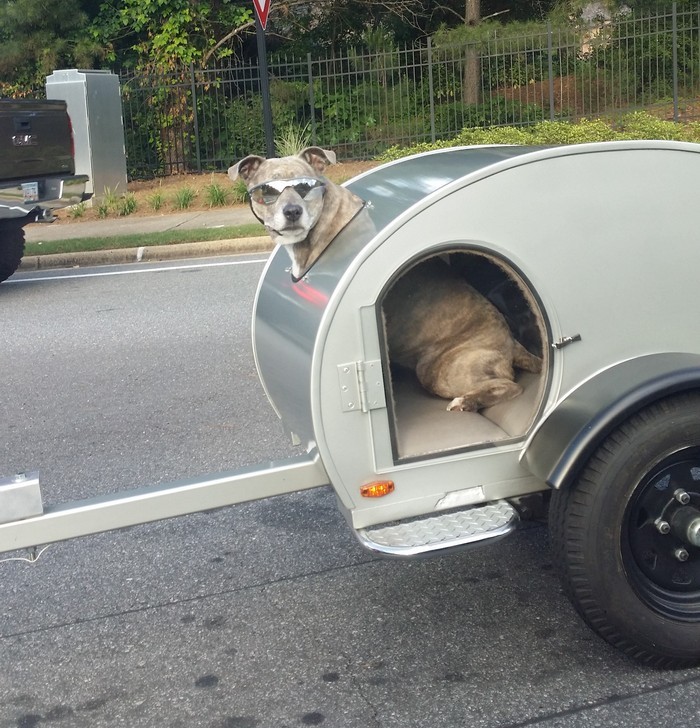
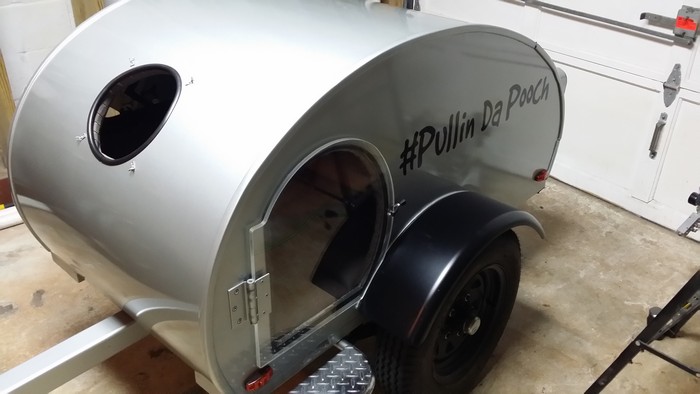
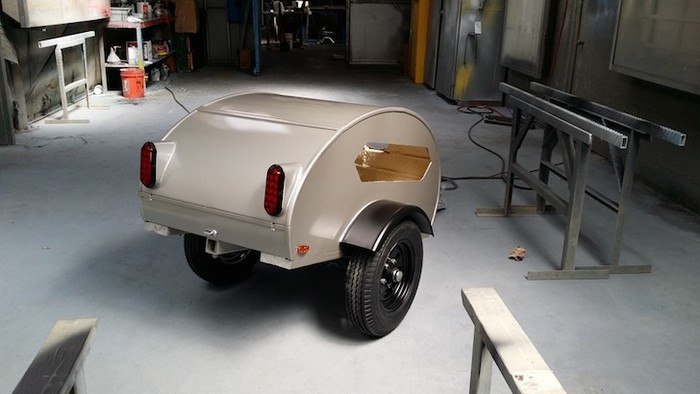
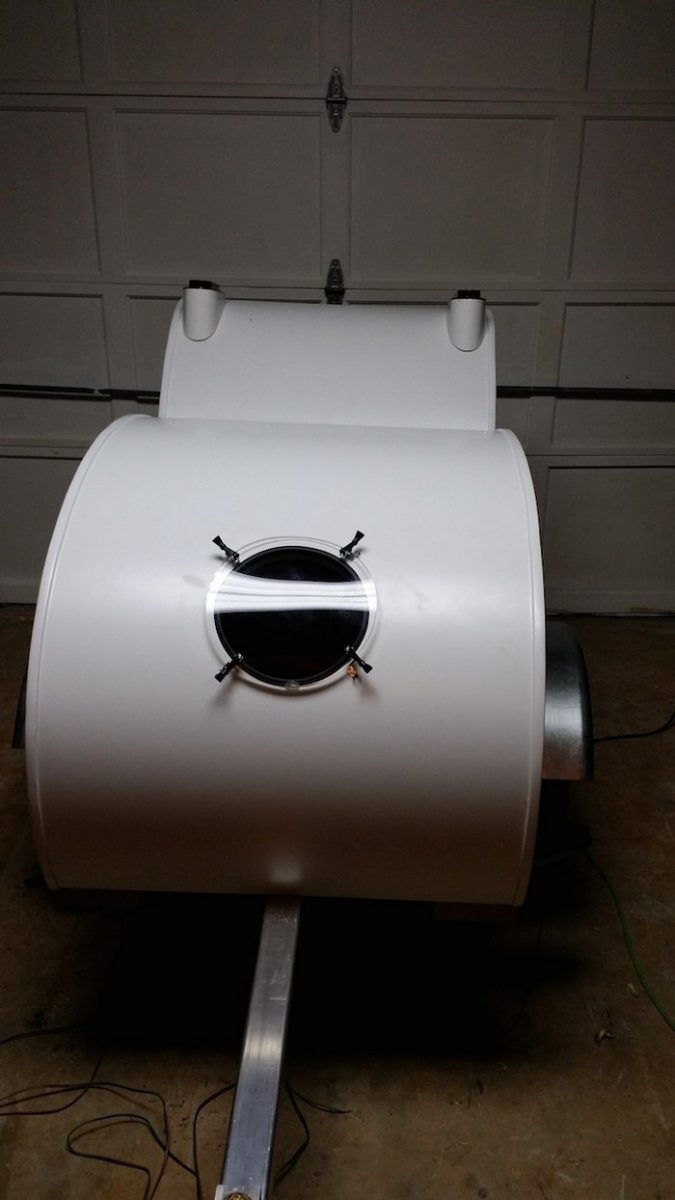
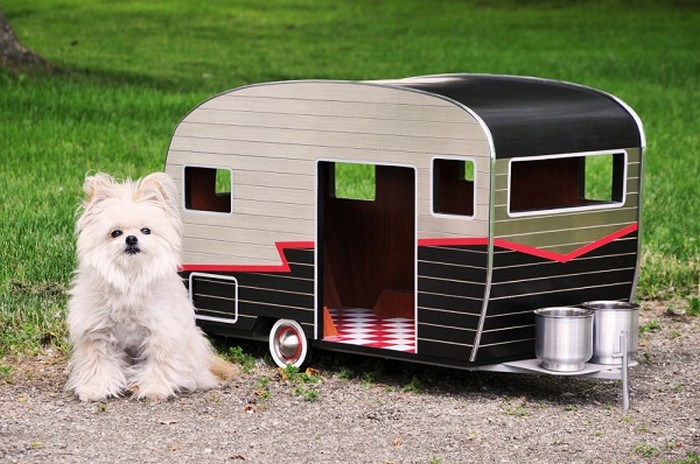
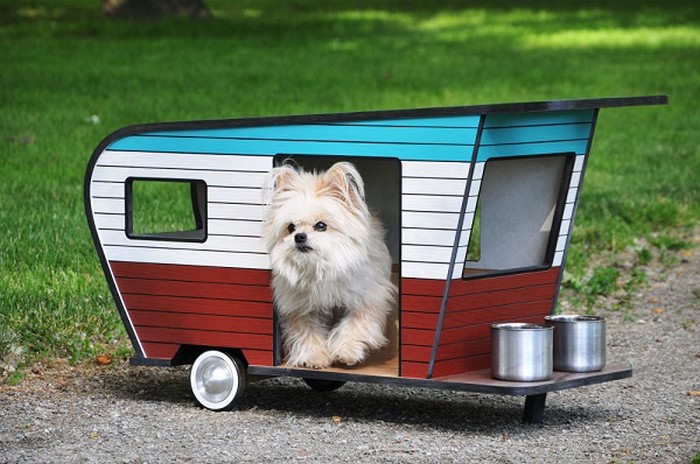
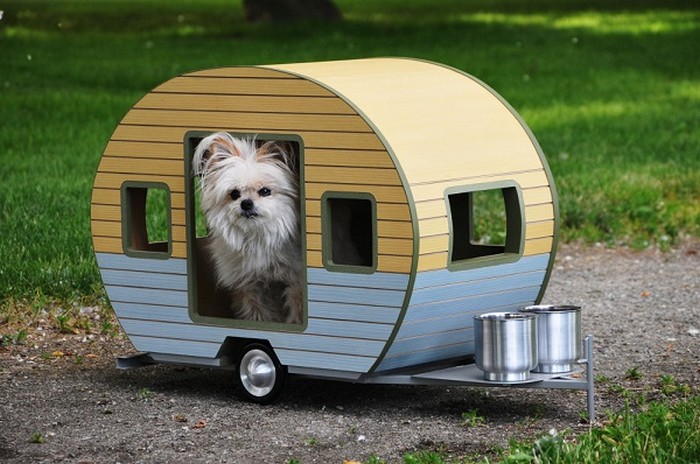
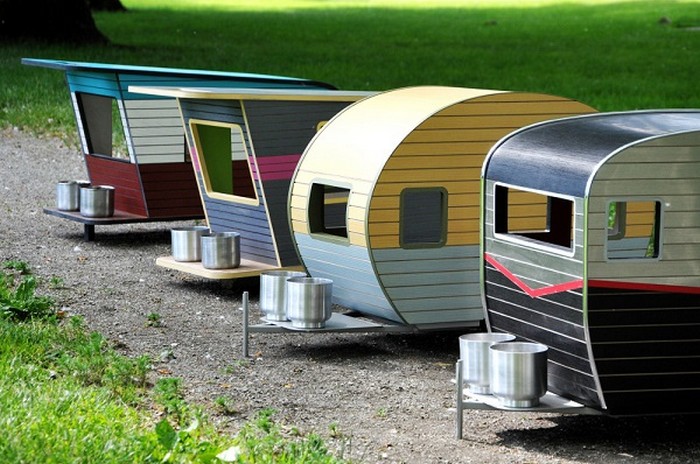
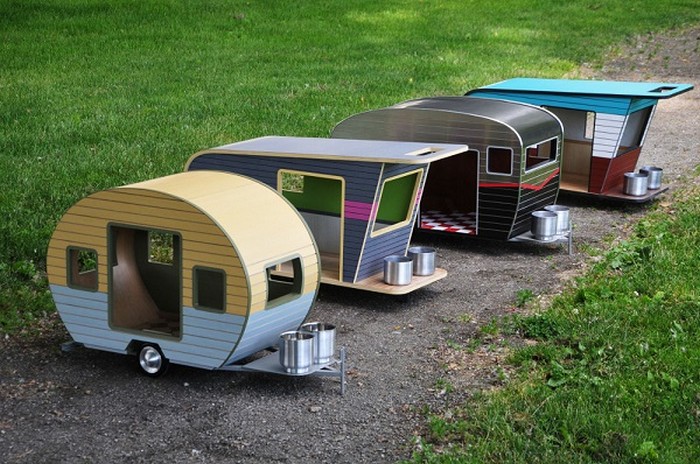
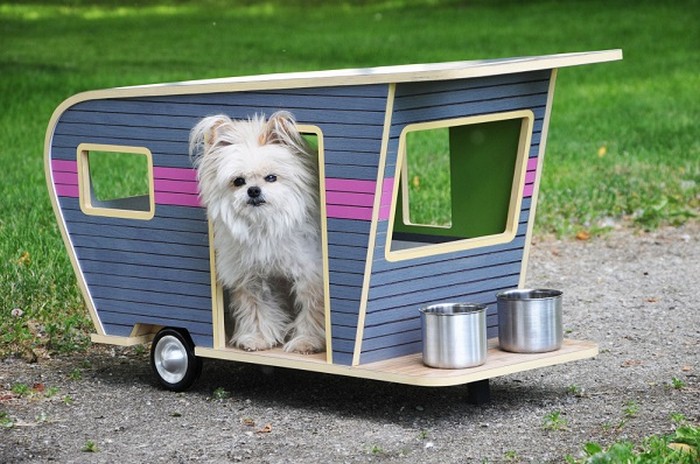
Dog Training Tips for Trailer Rides
Training your dog for trailer rides is essential to ensure they enjoy traveling with you. Whether planning a short trip to the park or a long adventure on the road, preparing your dog properly can make the journey enjoyable for both of you. Here are some dog training tips to help your furry friend get used to their dog trailer.
Start with Familiarization
Introduce your dog to the dog trailer calmly and positively. Place the trailer in a familiar area where your dog spends much time. Allow them to inspect and sniff around it at their own pace. Encouraging curiosity helps your dog to recognize the dog trailer as a safe object.
Associate the Trailer with Positive Experiences
Create positive associations with the dog trailer by using treats, favorite toys, and lots of praise. Start by placing treats near the trailer, then inside it, to encourage your dog to explore the interior. Playing near or in the dog trailer can reinforce these positive feelings.
Practice Getting In and Out
Once your dog is comfortable around the trailer, practice getting them in and out. Use a command such as “trailer” or “ride” to signal it’s time to enter. Reward them with treats and praise for following instructions. This step is crucial in making the dog trailer a familiar and comfortable space.
Begin with Short, Stationary Sessions
Before hitting the road, have your dog spend short periods in the dog trailer while it’s stationary. Gradually increase the time they spend inside, always providing positive reinforcement. These sessions help your dog to get used to being in the trailer without the added stress of movement.
Introduce Movement Slowly
Start introducing movement by manually moving the dog trailer around. This helps your dog adjust to the sensation of movement in a controlled and reassuring environment. Once comfortable, proceed with short trips around the neighborhood before embarking on longer journeys.
Ensure Comfort and Safety
Make sure the dog trailer is comfortable and safe for your dog during these training sessions. Adequate bedding, ventilation, and securing the trailer are essential to keep your dog relaxed and secure.
Stay Patient and Consistent
Patience and consistency are key in dog trailer training. Each dog learns at their own pace, so it’s important to stay patient and not rush the process. Consistent practice, positive reinforcement, and gradual introduction to new experiences will help your dog become a happy and confident traveler in their dog trailer.
Legal Considerations and Best Practices
When it comes to traveling with your dog in a dog trailer, it’s crucial to be aware of the legal considerations and best practices that ensure safety and compliance. Understanding these aspects can help you avoid legal issues and enhance the travel experience for you and your furry companion. Here are key points to consider regarding legal considerations and best practices for using a dog trailer.
Know the Legal Requirements
Before embarking on any journey with your dog trailer, it’s crucial to be well-informed about the legal requirements specific to your location. These regulations are designed to ensure the safety of all road users, including you and your pet. They can cover a wide range of aspects:
- Safety Harnesses: Certain jurisdictions may mandate using safety harnesses for pets riding in trailers, ensuring they remain secure in case of sudden stops or accidents.
- Trailer Lights and Signal Indicators: To maintain visibility, especially during dawn, dusk, or nighttime, your dog trailer might need to be equipped with specific lights and signal indicators that align with road safety laws.
- Trailer Size and Type: There could be restrictions on the dimensions and type of dog trailer you can tow, based on your vehicle’s size or the roads you plan to use. Some places might restrict larger trailers on certain roads or require special permits for oversized loads.
- Ventilation and Safety Features: Additional regulations may dictate the need for adequate ventilation in the trailer to ensure your pet’s well-being, along with requirements for secure locking mechanisms to prevent escapes.
Understanding and adhering to these rules keeps you compliant with the law and safeguards your pet and others on the road. It’s advisable to consult local transport authorities or conduct online research to gather this crucial information before your journey.
Ensure Proper Identification
Ensuring your dog has proper identification is a fundamental safety measure when traveling in a dog trailer. This precaution is vital for the quick and safe return of your pet should they become separated from you:
- Collar with ID Tags: A sturdy collar equipped with ID tags that include your dog’s name, your name, and contact information is the first line of defense in case your dog gets lost. The tags should be durable and securely attached to the collar.
- Microchip: For an added layer of security, consider having your dog microchipped. A microchip is a permanent form of identification that can’t be lost or removed like a collar. Veterinary clinics and animal shelters can scan lost pets for microchips to retrieve the owner’s contact information.
- Up-to-Date Information: Keeping the information on both the ID tags and the current microchip is essential. If you move or change your phone number, updating this information promptly ensures that anyone who finds your lost pet can contact you immediately.
Proper identification is a simple yet effective way to protect your pet during travels. It provides peace of mind, knowing that if your dog becomes lost, their chances of being returned to you significantly increase. Before any trip, double-check that your dog’s identification is secure and up-to-date, setting the stage for a worry-free adventure.
Follow Traffic Safety Laws
When towing a dog trailer, following traffic safety laws is not just a legal requirement but a crucial practice for ensuring the safety of everyone on the road. These laws are designed to minimize the risks associated with towing and to protect you, your pet, and other road users:
- Observe Speed Limits: Towing a trailer affects your vehicle’s handling and braking distances. It’s important to adhere to speed limits, which may be lower for vehicles towing trailers. Slower speeds improve your reaction time and reduce the risk of accidents.
- Use Correct Signal Lights: Proper signaling is essential for informing other drivers of your intentions. Always use the correct signal lights when turning or changing lanes. This helps prevent collisions and ensures smooth traffic flow.
- Ensure Visibility: Your dog trailer should always be visible to other road users. In addition to standard tail lights, consider adding reflective materials, additional lights, or flags to the trailer. These enhancements are particularly important in low-light conditions, such as at dawn, dusk, or night, as they significantly improve your trailer’s visibility.
- Check for Blind Spots: Towing a trailer can create additional blind spots. Use mirrors adjusted for towing to monitor traffic around you and your trailer. Being aware of your surroundings helps in making safer lane changes and turns.
Following these traffic safety laws contributes to a safer road environment. Regularly check your trailer’s lights and reflectors to ensure they are in working order, and consider taking a towing safety course if you’re new to towing.
Consider Insurance Coverage
Ensuring you have the appropriate insurance coverage for towing a dog trailer is essential. Not all standard vehicle insurance policies include coverage for accidents or damage involving a trailer, which could leave you facing significant out-of-pocket costs in the event of an incident:
- Review Your Current Policy: Review your existing vehicle insurance policy to understand what is and isn’t covered. Look specifically for any mention of trailers or towing, as some policies may exclude these or offer limited coverage.
- Investigate Additional Coverage: If your current policy does not cover towing a dog trailer or offers insufficient protection, contact your insurance provider to discuss your options. You may need to add a rider to your policy or purchase a separate policy for the trailer.
- Understand the Coverage: When considering additional insurance, pay close attention to what the coverage includes. Look for policies that cover damage to the trailer, liability for damage or injuries caused by the trailer, and possibly theft or loss of the trailer and its contents.
- Compare Quotes: It’s wise to get quotes from several insurance companies to compare coverage options and costs. Make sure you’re comparing equivalent coverage levels to get a clear picture of what each policy offers.
The right insurance coverage gives you peace of mind when you’re on the road with your dog trailer. It protects you against potential liabilities and ensures you’re prepared for any situation during your travels.
Conclusion
Building a dog trailer is a labor of love that enhances the quality of life for you and your beloved pet. By following the guidelines and tips provided, from selecting the right bedding and ensuring adequate ventilation to adding personal touches and training your dog for trailer rides, you can create a safe, comfortable, and enjoyable environment for your furry friend.
Check out our teepee house project to further make your dog or cat comfortable.


